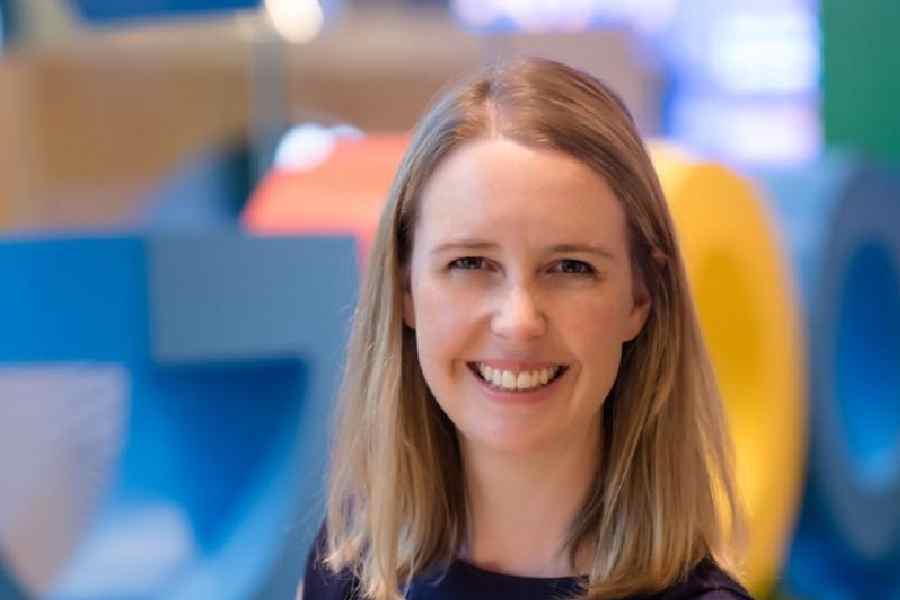Google is far more than just search or the company behind a number of powerful applications. Google.org, the philanthropic arm of Google, has been long working on several important projects. It has an active track record of supporting Indian nonprofit organisations as they have addressed pressing issues across the realms of education, health, agriculture, and more, all the while leveraging technology to achieve multiplier social impact. At the moment, we are talking about AI from a place filled with fear but the technology can be used meaningfully.
Take the case of Wadhwani AI, which has received $3.3m in grant funding under the AI for the Global Goals challenge by Google.org. The idea is to advise farmers on pest management for cotton crops. Then there is CyberPeace Foundation, which has received from Google.org a grant of $4m to help 40 million people combat misinformation across India.
We spoke to Annie Lewin, senior director, global advocacy and head of Asia Pacific, Google.org, about how AI is being used to bring about meaningful changes.
Google.org has a lot of AI-focused projects….
The founders of Google have always believed that technology could have an incredible impact on the social sector. So they wanted to ensure, from the early days of the company, that we were applying the latest technology to some of the toughest challenges that humanity is trying to tackle. From where I sit now, as Google has become an AI-first company, Google.org, has become an AI-first philanthropy. I think the promise of AI for the social sector is really exciting.
We’re learning a lot about the types of projects and challenges that AI can solve. We’re seeing a lot of that here in India, and a lot of Indian organisations are leading the way. When we think about how we support organisations, we think about bringing three things to the party. The first, of course, is funds. How can we make cash grants that allow teams that have big ideas, to develop solutions.
We make our products available and donate our products, but we also make our skills available as well. In 2019, one of the more recent developments in Google.org, we created a programme called Google.org Fellowships. And what that means is that Google employees can actually go out and spend up to six months and be a part of nonprofit organisation, doing pro bono work to help them develop different solutions.
If you can share a bit about how AI is being implemented in India?
AI can be very good at doing things that humans find tough or time consuming to do. I’ll give you a few examples. One is computer vision. AI models are good at learning to recognise types of images. And in processing a lot of images in a way that would take people an awful lot of time to do. Wadhwani AI is an organisation using a very clever type of computer vision to identify pests.
I love the technology in both its simplicity and its technical achievement. You have pests collected in a pest trap. A farmer will shake those pests out onto a piece of paper, take a photo with this app called CottonAce. And the app will recommend the next few steps; give them a prescription for what sort of pesticides to use in order to tackle what they’re facing. What’s really powerful about this is that it means that the right amount of pesticide is used, which saves the farmer money and pesticide is expensive. And it also means that they can kind of share this information among them. Farmers who are using this technology, have seen a 20 per cent increase in profits.
AI can be used in areas we don’t usually talk about….
The second area that AI is very good at doing or very good at augmenting what humans do is making sense of very large or very complex datasets. These are datasets that will take humans a long time. One of our grantees we see making very effective use of this in India is ARMMAN, which is dedicated to improving maternal health and maternal mortality. They have a very effective system where they push to new and expectant mothers information about how to be healthy, how to look after the infant and look after themselves. They do it via a variety of voice and other messages. Where AI comes in is on developing a model that identifies which women are at most risk of dropping out of the programme. It uses a variety of factors to find out the woman that you actually now need to intervene with a human touch.

Annie Lewin, senior director of global advocacy and head of Asia Pacific, Google.org
The hot topic now is how we can use these generative AI models in the social sector? Rocket Learning is an organisation in India committed to changing educational outcomes, particular early childhood educational outcomes, and what they are using… we gave them a grant… to help roll out a technology that will develop a personalised learning coach for young children and their families to help kind of close the education gap. Rocket Learning has this incredible goal of engaging every child and parent in the Indian public school system with this educational content. That’s the sort of thing that would take people, working alone on this project, years. Imagine trying to develop a personalised education coach for every child in India that would be an almost impossible task. But when you harness the kind of power and potential and promise of AI for these projects you can set bold goals.
Google has taken a very cautious approach in whatever it is doing with AI. Do you think our level of fear around AI will gradually subside?
I think AI as a technology for the social sector holds an incredible promise; it must be developed responsibly, it must be developed with guardrails, and it must be developed with the input, knowledge and expertise of so many parts of society — government, civil society, nonprofit sector…. I think the particular sorts of use cases that we’re talking about, right now, it’s still only a relatively small number of nonprofit organisations that have the knowledge, and to your point, the confidence and the capability to put this sort of solutions in place. These are sophisticated AI solutions. What to me is the next challenge for all of us, given the sort of potential this technology has when used responsibly and developed responsibly, how do we bring together thousands of small nonprofit organisations in India who could so benefit from this. If you think about a nonprofit organisation, they are generally working with a small team and not always terribly well resourced.
What AI can offer is the ability to do tasks that are repetitive or time consuming to free them up for more creative work or strategic work. I’ll give you an example. We talked to our grantees that have used AI to do their work and apply them to their projects. And our grantees who use AI achieved their objectives in around one-third of the time, and half of the cost, compared to if they didn’t use AI. And that, to me is, is pretty transformative numbers when you think about trying to work at the scale and speed that India demands.
You are also working with CyberPeace Foundation…..
We are committed to seeing this kind of very advanced technology being applied to these really tough social challenges. This has to be built on a foundation of a safer Internet. Those of us who have been online a long time, being experienced tech users, you have the sort of trusted network of people whom you can ask questions. If you’re a first time Internet user… hundreds of millions of people coming online in recent years… you don’t necessarily have that tech-savvy network because your friends and family might also be new Internet users. What we see around the world, and what we’re funding, is trusted nonprofit organisations to bridge this gap, and to actually be there to train, provide education, offer advice to help people become more resilient against misinformation. That’s where the grant for CyberPeace Foundation comes in. They are going to run a nationwide skills training programme, aiming to reach 40 million people across India, across 15 languages.










